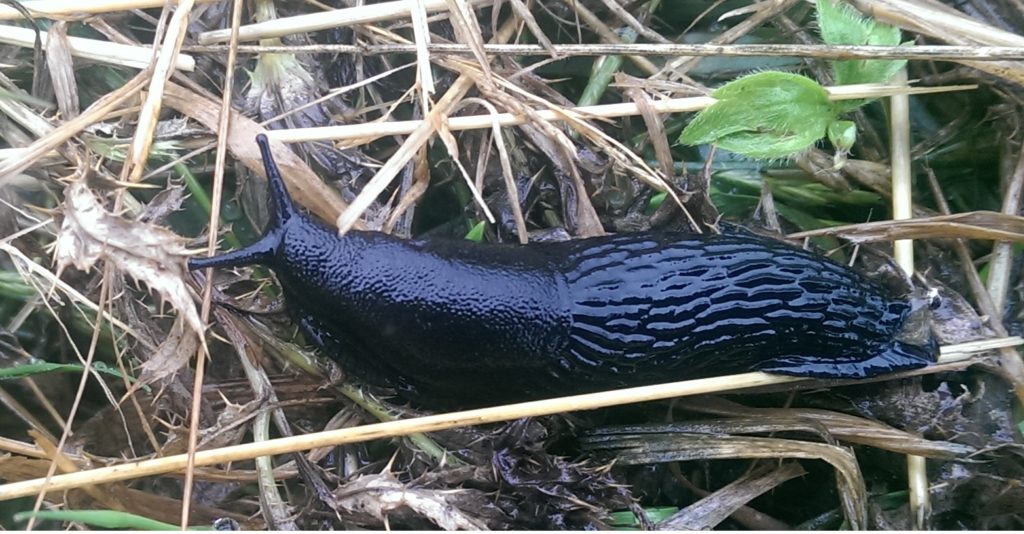Forward Planning for Slugs – July 2020
20 July 2020The wet weather has encouraged slugs to make an appearance and many can be seen feeding on the ears of wheat.
The wet weather will improve the survival of slugs over the summer and will likely lead to an increased risk of slug damage to crops to be sown this autumn.
Slug trapping can be used now to assess the risk from slugs in a particular field. To get the best from slug trapping the bait placed under the trap needs to grab the slugs’ interest and to keep them there. The best bait is a dry food bait such as the breakfast cereal ‘Alpen’ or similar, or chicken feed (layers mash). Do not use slug pellets as bait. A tablespoon of the bait should be placed under the trap, which can be a slate, fertiliser bag, slug mat, an upturned flower-pot base, wooden board or something similar. Timing of trapping is crucial – place traps after there has been some rain, and the soil surface is moist. Traps should be checked in the morning before the day warms up too much, 1-2 days after being placed in the field. Consider using several traps per field so that you can determine whether some areas are more ‘sluggy’ than others, and trap regularly. If slug numbers exceed 5 per trap, especially if conditions have been suitable for slugs to be feeding on the soil surface (damp soil and humid nights) then the following winter wheat crop is likely to be at risk from slug damage. Only one slug per trap is enough to put winter oilseed rape at risk.
To reduce the risk of slug damage aim to provide a fine, firm seedbed for this autumns’ crop. Soil cultivation can reduce the risk of slug damage, as can deeper sowing of seed (3-4 cm).
With the loss of the neonicotinoid cereal seed treatments, protection from seed hollowing by slugs by this method is no longer available. Consequently, an application of slug pellets may be needed to protect the germinating seed as well as the shoots (up to GS12).
In oilseed rape, the germinating crop needs to be protected from slug damage up until the 4-leaf stage.
Generally, a pre-emergence application of pellets with a follow-up post-emergence, if the damage is seen, tends to do the job in both wheat and winter oilseed rape. However further treatments may be necessary if the crop is slow to emerge or slug pressure is severe.
Metaldehyde and ferric phosphate slug pellets will both do a decent job of preventing slug damage but bear in mind the restrictions regarding metaldehyde use, particularly the 10-metre edge of the crop zone where metaldehyde pellets should not be applied. There are no restrictions for ferric phosphate pellets.
Sign up to the FAS newsletter
Receive updates on news, events and publications from Scotland’s Farm Advisory Service

